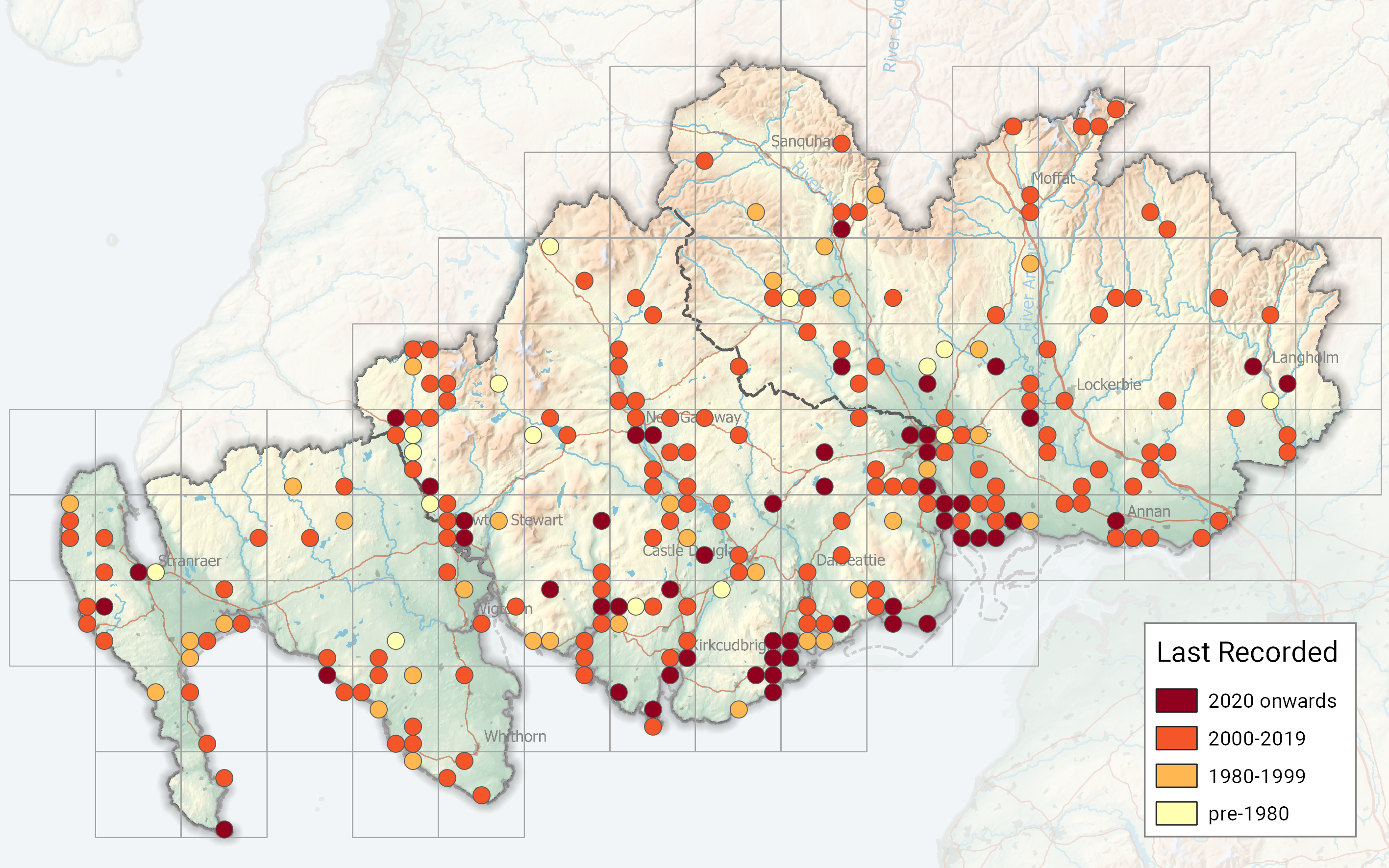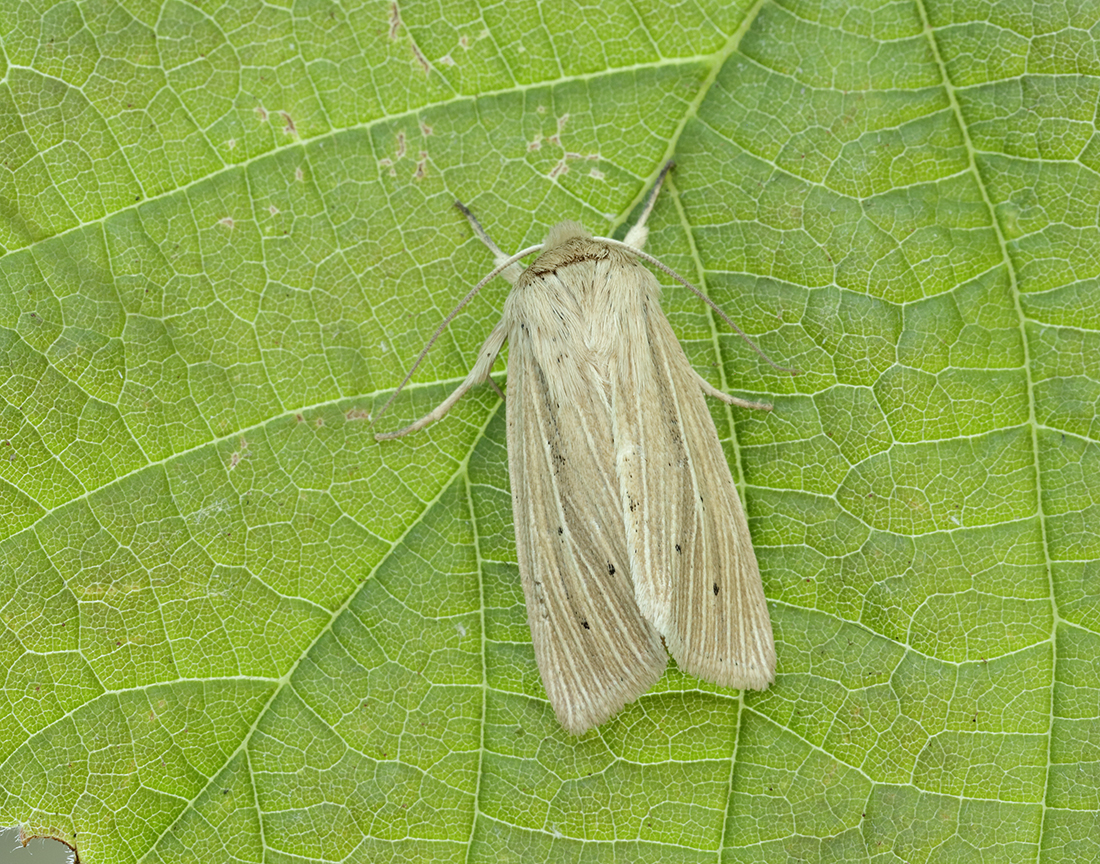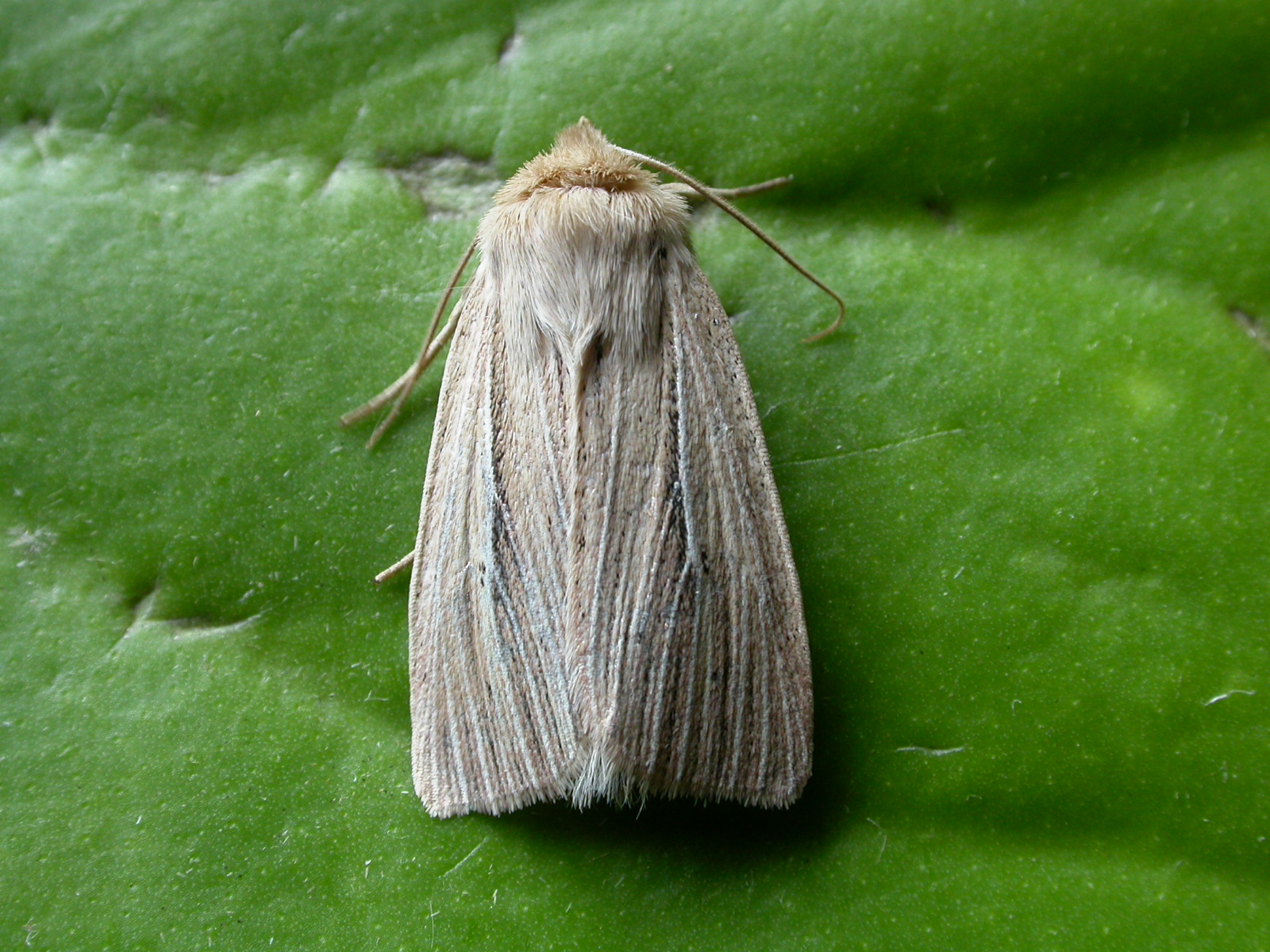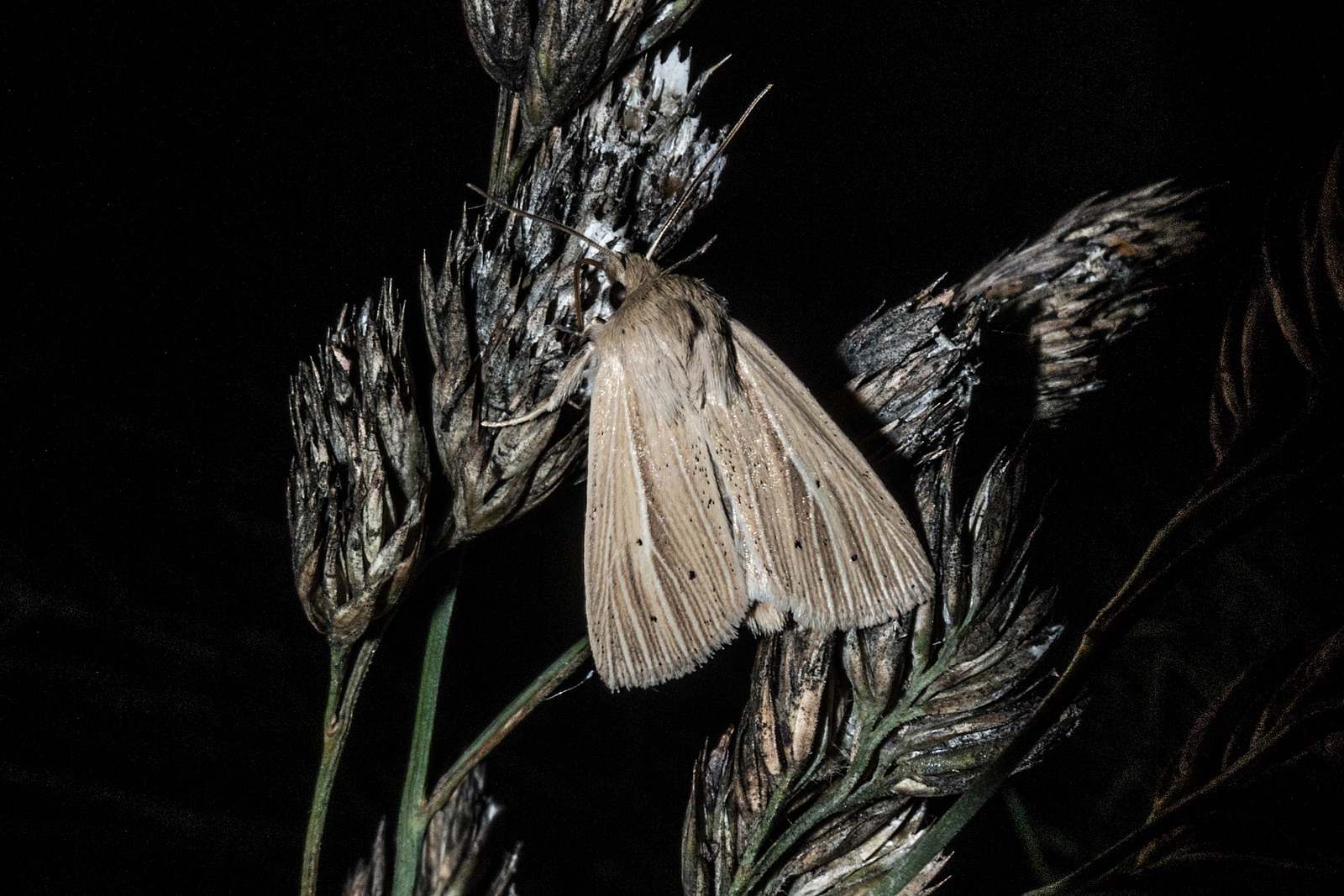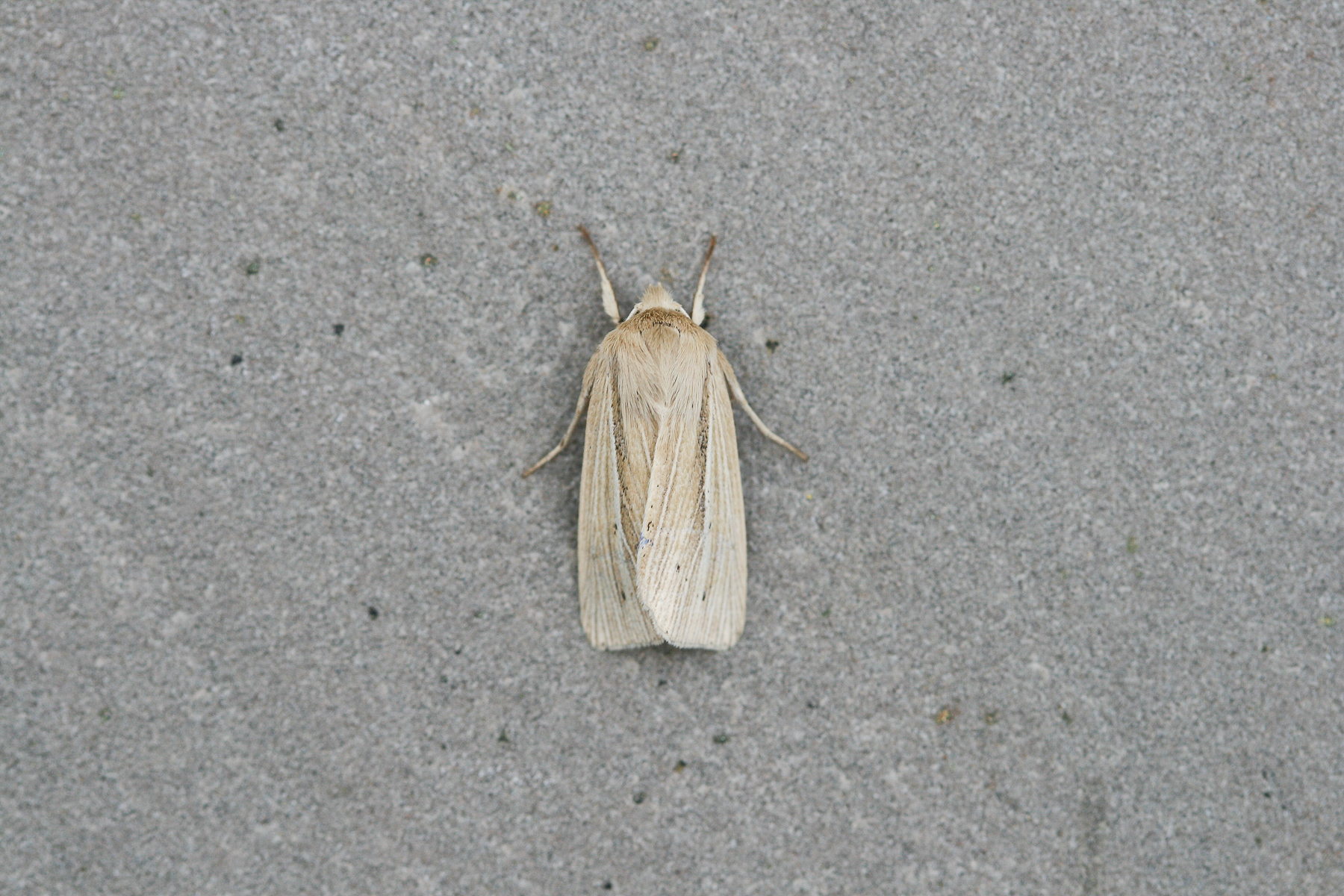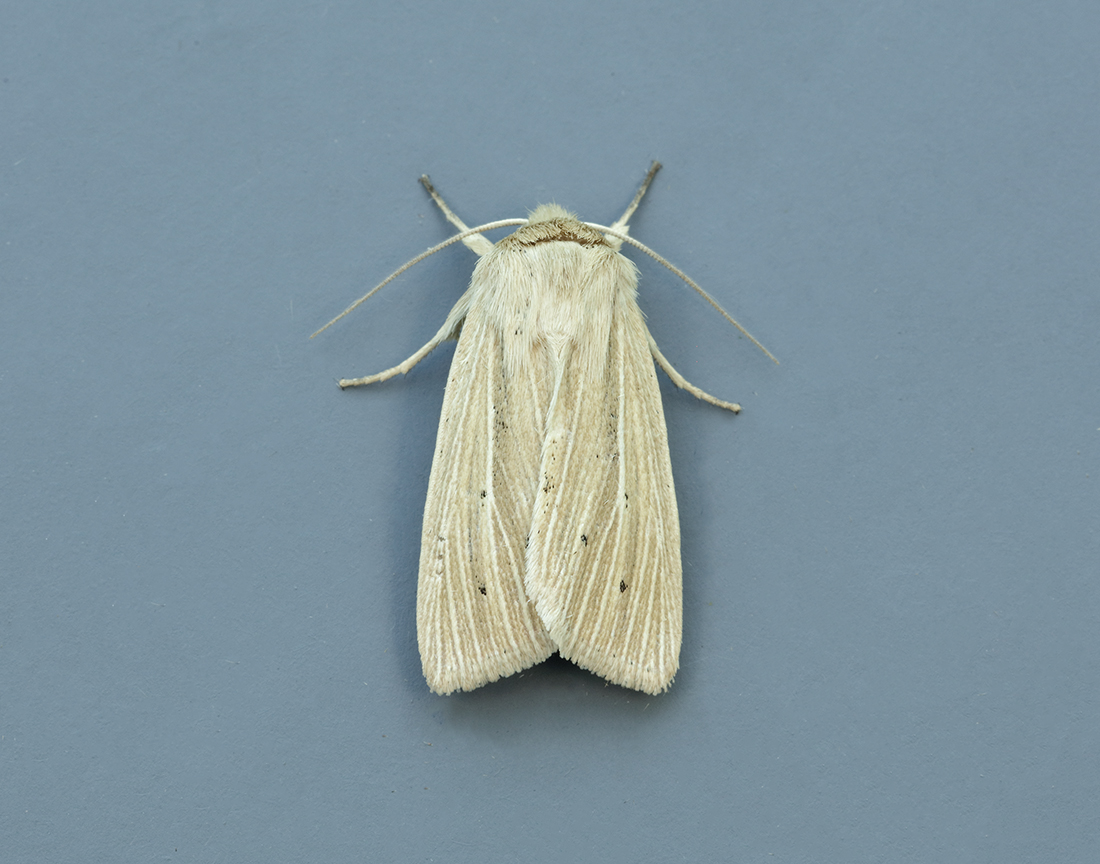Identification
Care required to separate from other ‘wainscots.’ The straw-coloured forewing with a brown or black streak alongside the whitish central vein, together with the smoky grey hindwing should separate it from similar species.
Recording Method.
Attracted to light, also comes to sugar and flowers.
Life cycle
One generation. Overwinters as a small larva, close to the ground, during August to May, feeding by night, with pupation taking place in an underground cocoon.
Larval foodplants
Various grasses.
Habitat
A wide range of grassland, mainly lowland.
History
Lennon (1863) had recorded it from Marchmount (VC72) in 1862. Douglas Robinson (1870-71) had found it common in July on Almorness (VC73). K. J. Morton of Edinburgh (1900) while on a visit in July 1899 to Wigtownshire had found this species in the Monreith area. Gordon (1913) had found it abundant everywhere, giving an early date of 15th June 1899 and a latest of 3rd August 1905.
Archibald Russell (1944) listed it as occurring near Gatehouse of Fleet (VC73) during the years 1942-43. Sir Arthur Duncan (1909-84) during his lifetime had found it at Closeburn and Castlehill, Dumfries (all VC72).
From the mid 1960s to 1973 there were just fourteen records.
During 1974-92 there were three hundred and fifty records from all seven Rothamsted stations, proving it widespread.
On the Hensol Estate during the early 1980s a fine series was trapped. From 1987 to 2010 the regular trapped sites at Kirkton, Durisdeer, Cally Woods and Mersehead RSPB provided a good number of the seven hundred records trapped in that period, with the rest from widely scattered sites across the region.

